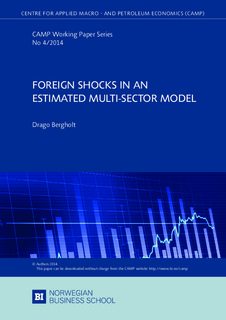Foreign Shocks in an Estimated Multi-Sector Model
Abstract
How are macroeconomic fluctuations in open economies affected by international
business cycles? To shed some light on this question, I develop and estimate
a medium scale DSGE model for a small open economy. The model incorporates
i) international markets for firm-to-firm trade in production inputs, and ii) producer
heterogeneity where technology and price setting constraints vary across industries.
Using Bayesian techniques on Canadian and US data, I document several macroeconomic regularities in the small open economy, all attributed to international disturbances. First, foreign shocks are crucial for domestic fluctuations at all forecasting
horizons. Second, productivity is the most important driver of business cycles.
Investment efficiency shocks on the other hand have counterfactual implications for
international spillover. Third, the relevance of foreign shocks accumulates over time.
Fourth, business cycles display strong co-movement across countries, even though
shocks are uncorrelated and the trade balance is countercyclical. Fifth, exchange
rate pass-through to aggregate CPI inflation is moderate, while pass-through at the
sector level is positively linked to the frequency of price changes. Few of these features
have been accounted for in existing open economy DSGE literature, but all are
consistent with reduced form evidence. The model presented here offers a structural
interpretation of the results.
